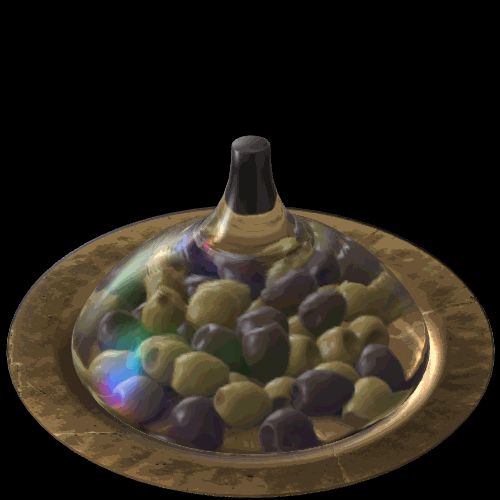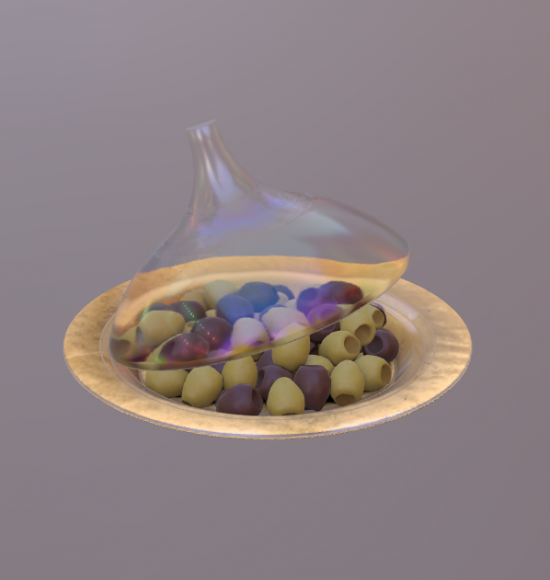New extensions support refraction, color attenuation, and volumetric properties.
The ongoing evolution of glTF has turned into one of the major efforts of the Khronos Group and it has heightened awareness of Khronos. If you don’t know, Khronos is an open consortium of interested parties who cooperate on the establishment of advanced interoperability standards. Much of their work revolves around 3D and visualization.
Most recently, they have released a set of Physically Based Rendering material extensions to support the Khronos glTF standard for publishing 3D assets on the web and other digital platforms including mobile devices, PCs, and the cloud. These new extensions enable material properties including refraction, color attenuation, and volumetric properties that can be used by diverse renderers of all descriptions—from realtime rasterization to advanced ray tracing.
The first supporters of glTF materials include rendering engines Babylon.js, Google Filament, and three.js. Software applications include Adobe Substance, 3D Stager, Dassault’s 3DExperience platform, DGG RapidCompact, and UX3D Gestaltor.

He says the group is currently working on future PBR extensions including Iridescence and Anisotropy. He encourages industry and community feedback.
At Siggraph 2021, Khronos had sessions on the three new rendering extensions being added to the glTV 2.0 PBR capabilities. They are:
- KHR_materials_ior: Index of Refraction describes how light is scattered as it passes through an object. By enabling artists to control IOR values, a diverse range of transparent materials can be made to look more realistic, including air, water, eyes, glass, sapphire, and diamond.
- KHR_materials_volume: The volume extension enables mesh surfaces to act as an interface between volumes and to enable more realistic refraction and absorption properties as seen in transparent materials. This extension gives translucent materials the appearance of depth and heft. For realtime engines incapable of ray tracing, this extension also supplies a thickness texture map, to enable fast approximations of light interacting with a volume of material.
- KHR_materials_specular: Specular properties are an object’s mirror-like properties: its ability to reflect light regularly, creating coherent reflections of other objects. Unlike its predecessor KHR_materials_pbrSpecularGlossiness, this new specular extension operates within the modern metallic/roughness workflow at the core of glTF’s PBR material model, enabling colored specular highlights compatible across the array of advanced PBR material extensions.
For that matter, Khronos had the usual deep dive of its latest work at the Siggraph BOF. Sadly, there’s no beer bash unless you bring your own but all the talks are available at the BOF site.
Going viral
For Khronos, glTF has been a very successful mode of outreach to the graphics community. The work done creating a cross-platform standard has been embraced by retailers and online catalogs, etc. It has enabled companies to present their products in a consistent and attractive way. As a result, it has gathered much wider participation in its working group for glTF and more companies are aware of the work Khronos is doing to foster interoperability.

Now is a really good time to remember that people just coming together to hash out a common problem and make compromises that may not be completely in their best interests is more than a technology strategy. It’s the secret to getting anything done.
In other news…
Unreal Engine and Khronos are announcing Unreal’s inclusion of production-ready OpenXR capabilities in Unreal Engine 4.27. As it turns out, the Facebook Oculus team has also announced its adoption of OpenXR for VR development going forward so the synergy is building for AR technologies across platforms.
Khronos has been working on OpenXR as a standard to simplify AR/VR development which will allow developers create content for and distribute it across different platforms without creating custom development for each platform.
We were just talking about Facebook’s introduction of Horizon Workrooms as at least one approach to a richer environment for remote work. We’re not at all convinced that headsets, at least the ones that are available now, are going to play a big role in workplaces of the future, but we’re totally convinced that standard formats for AR/VR distribution are critical to the ultimate success of immersive technologies.






